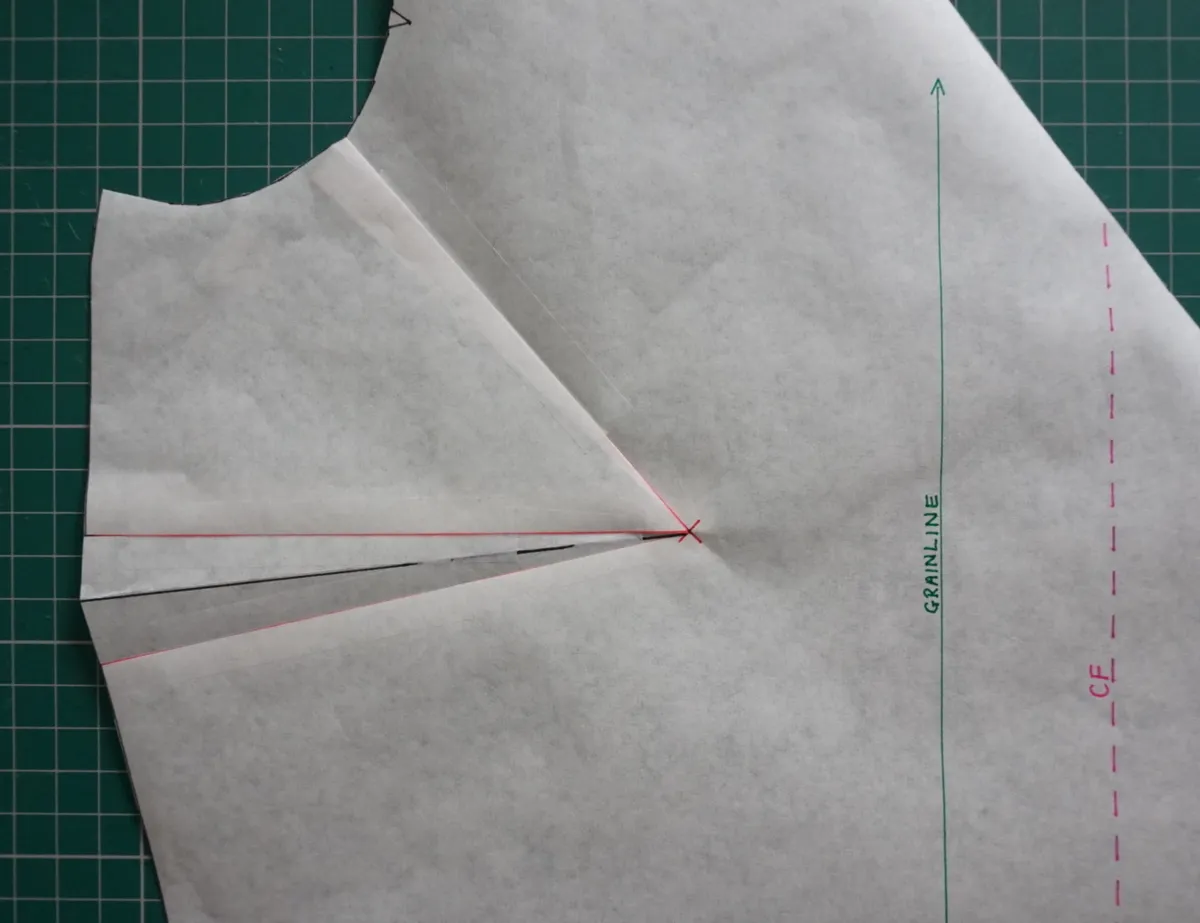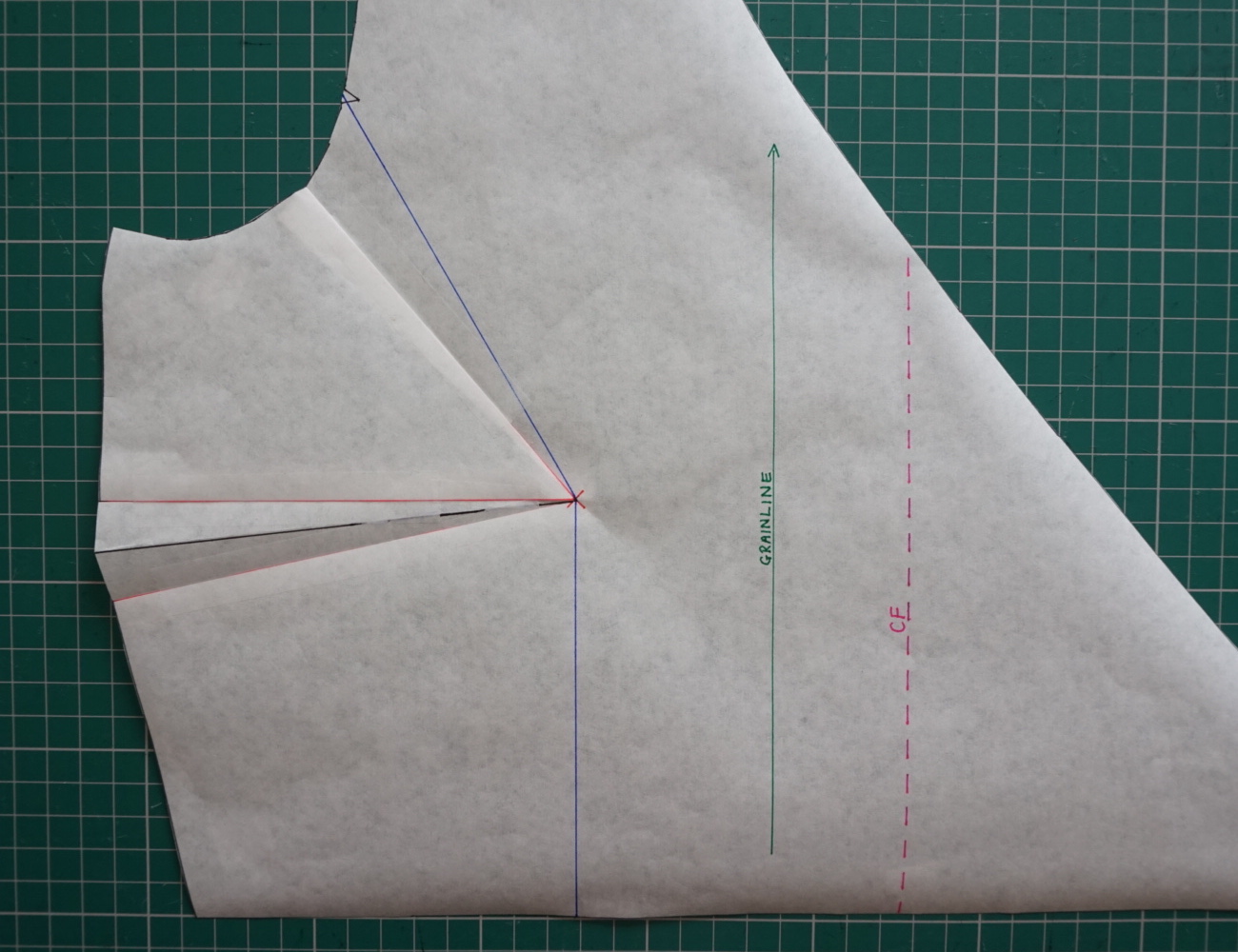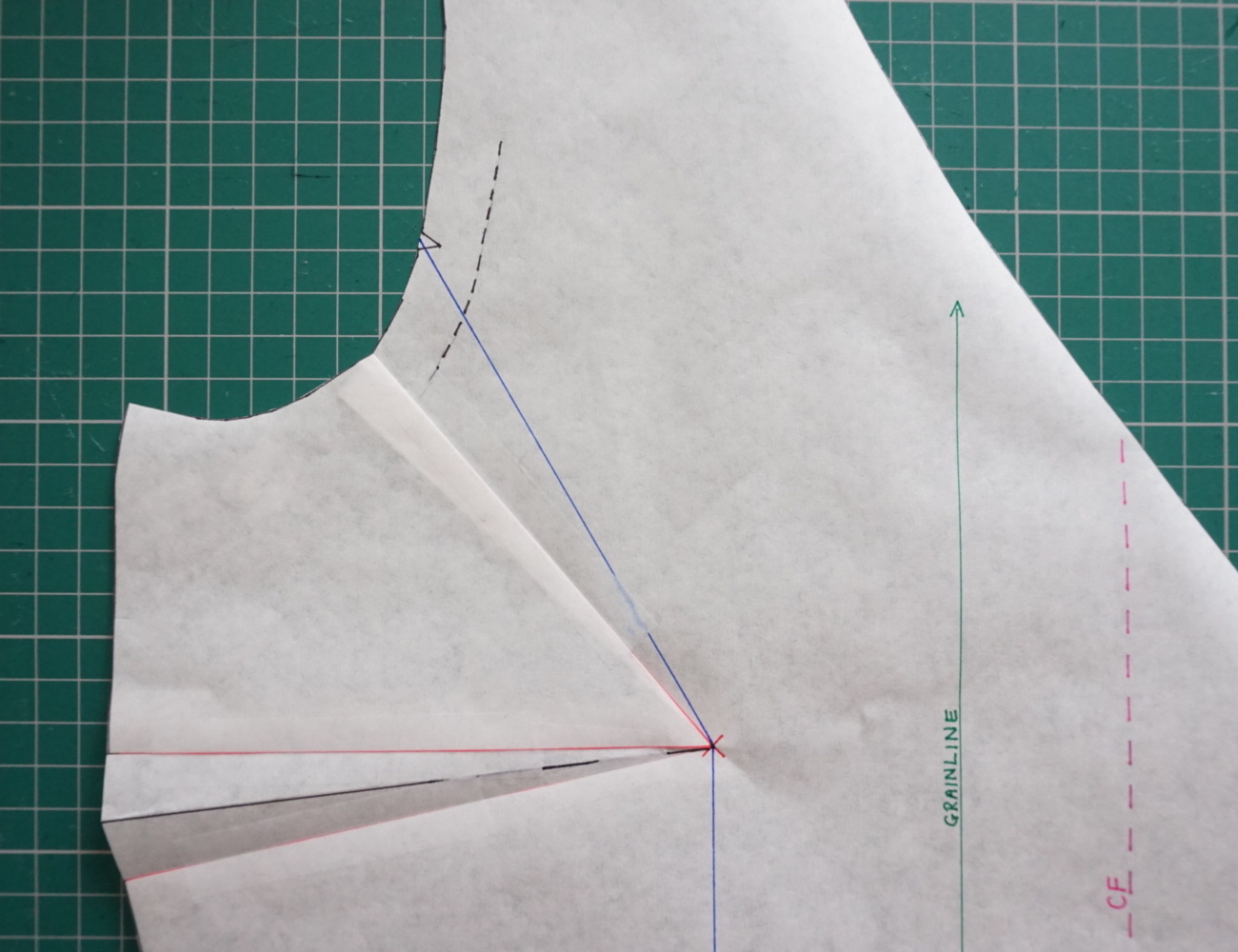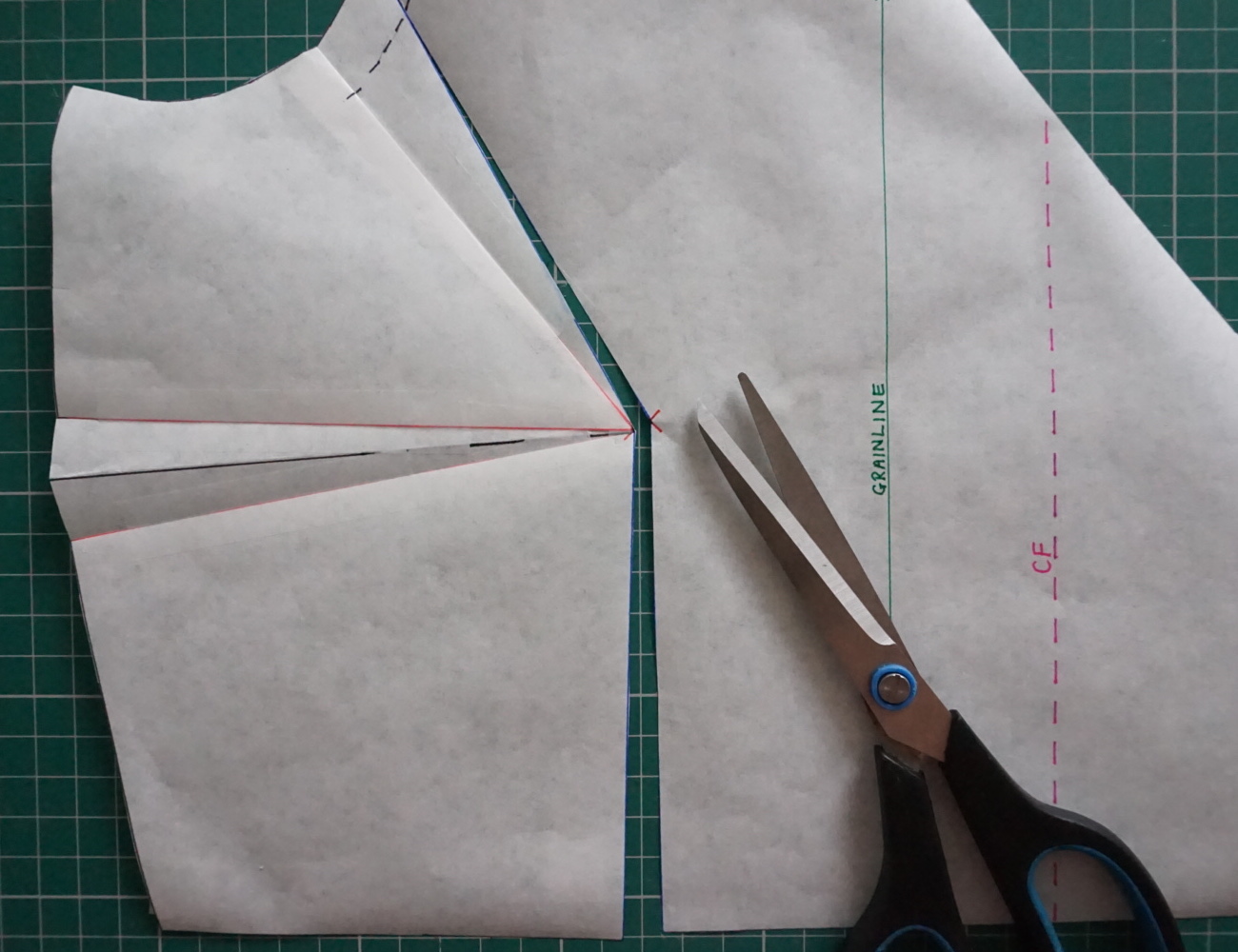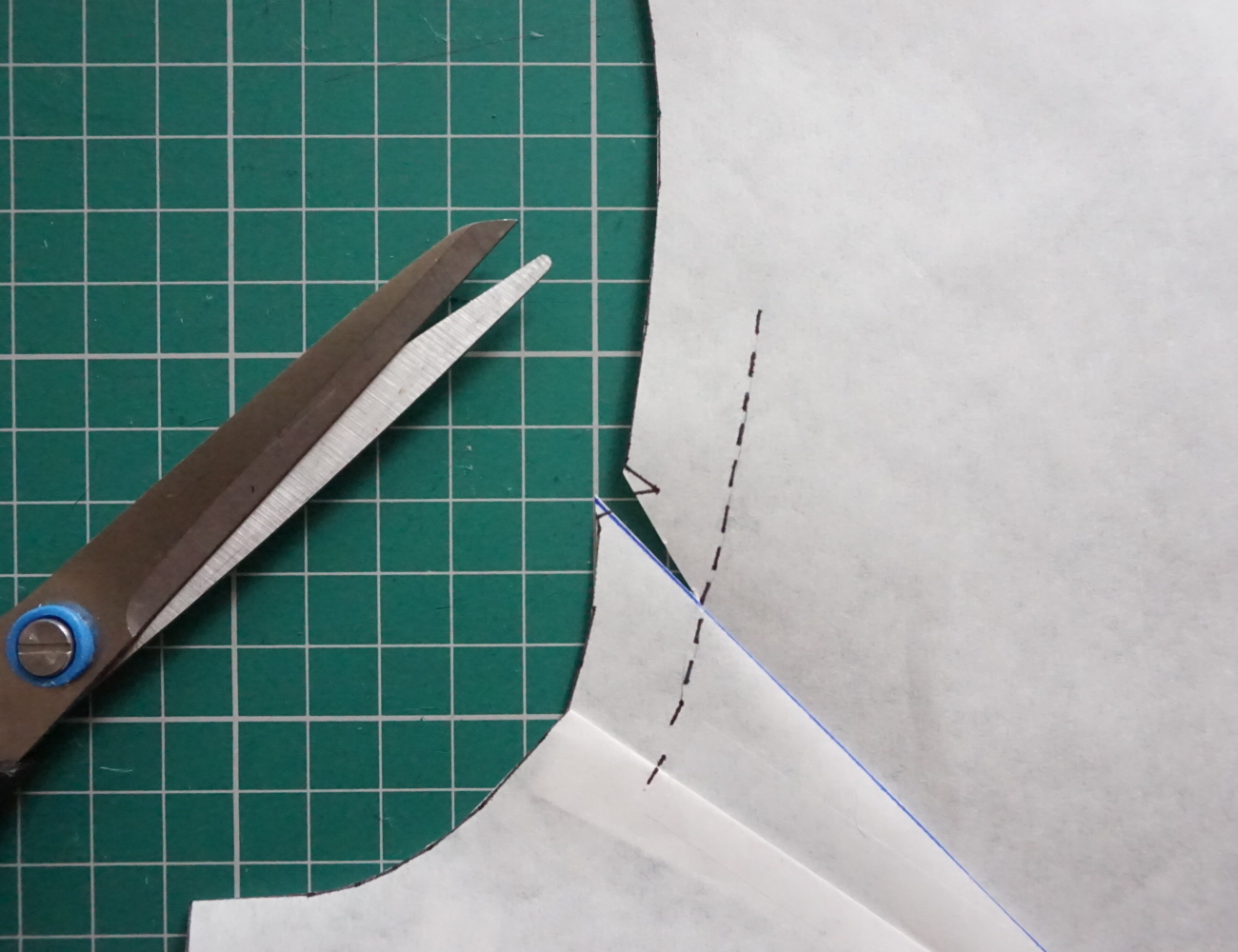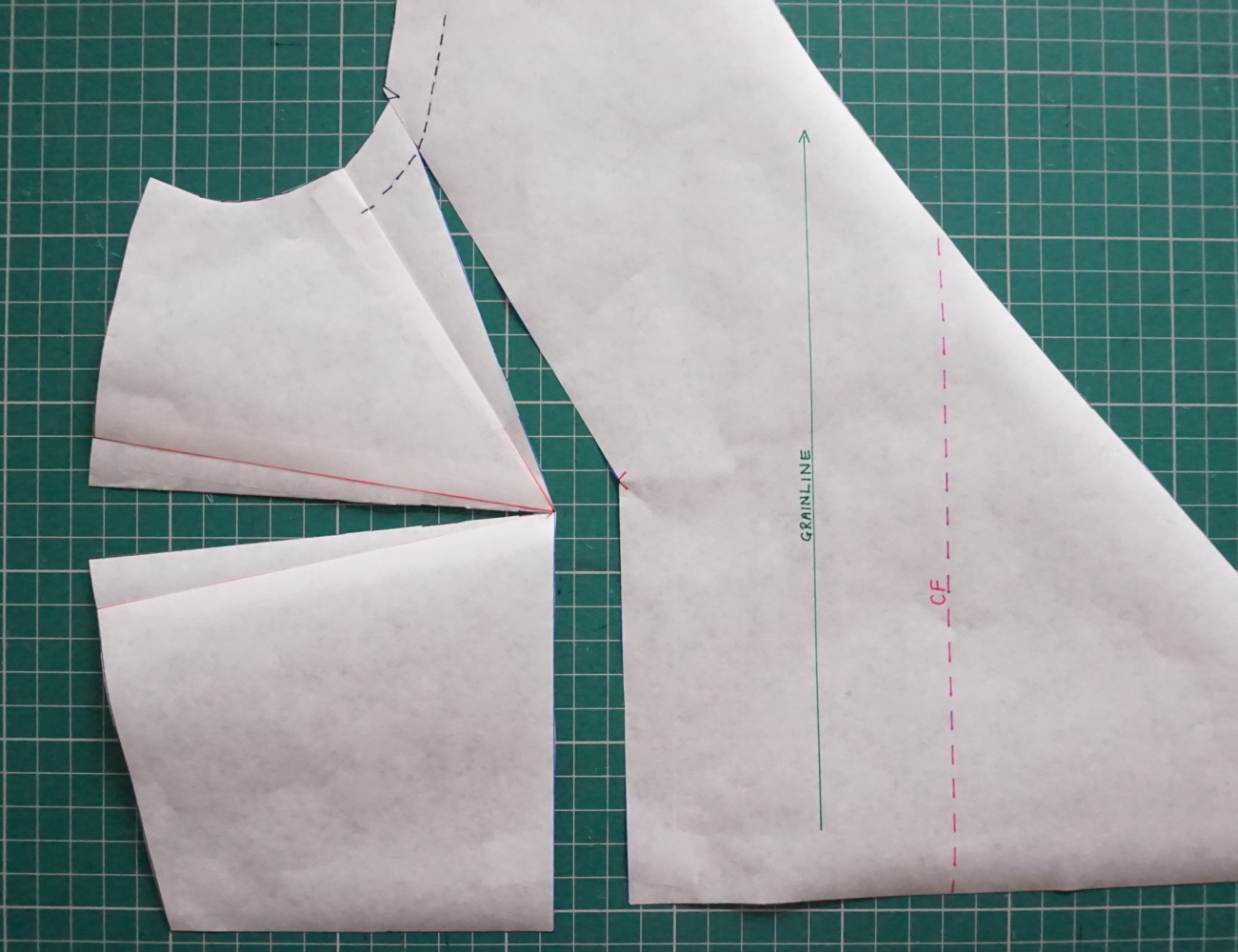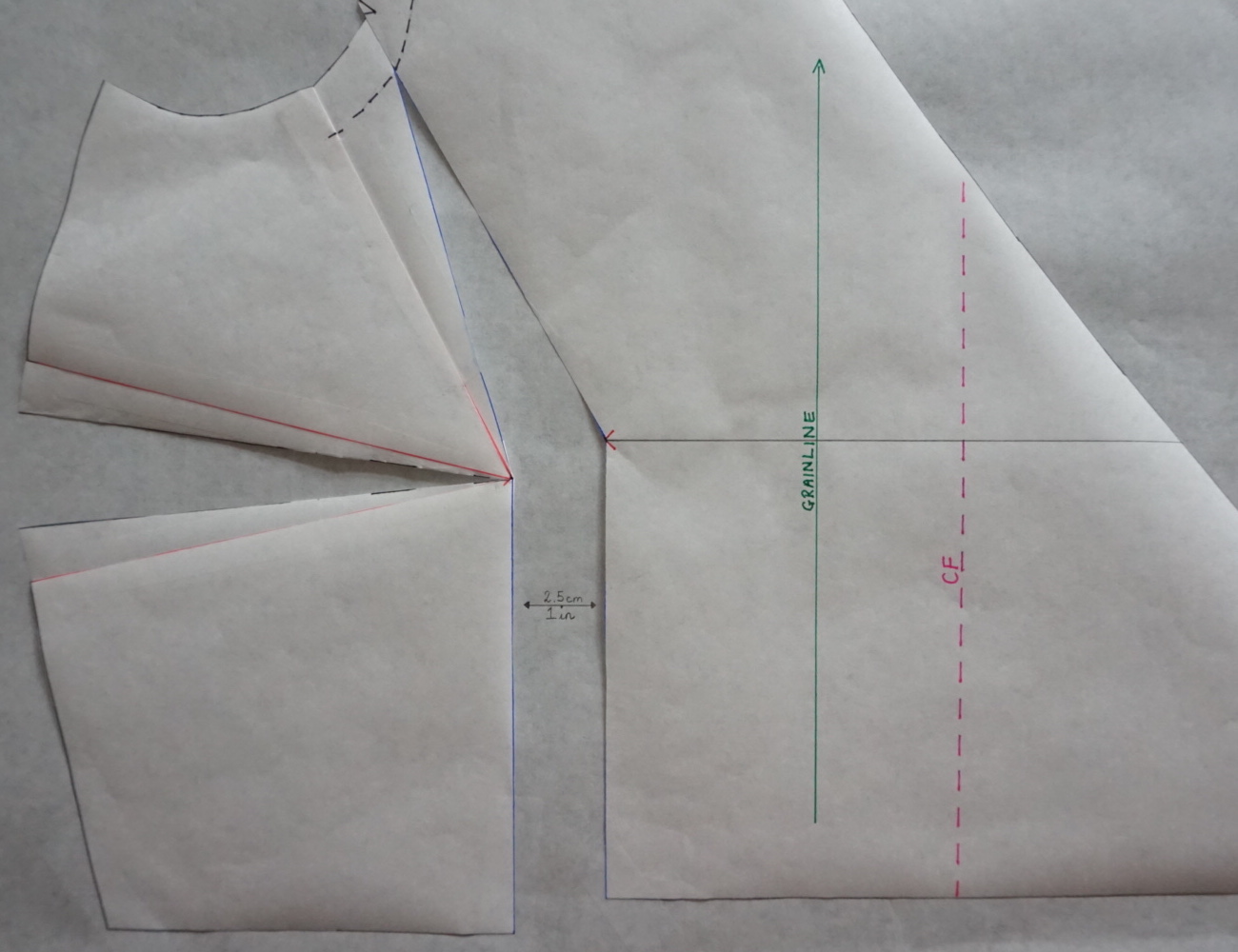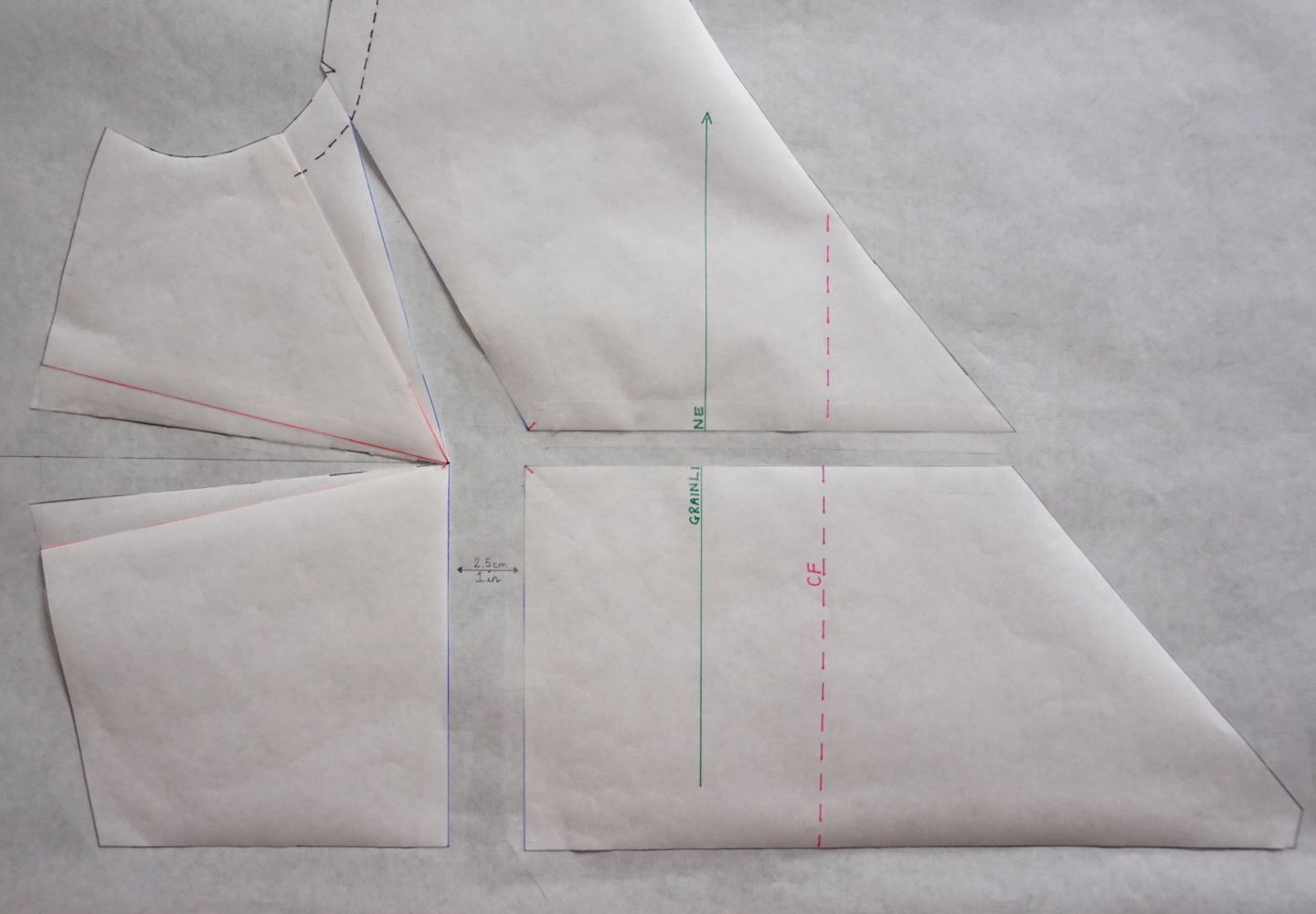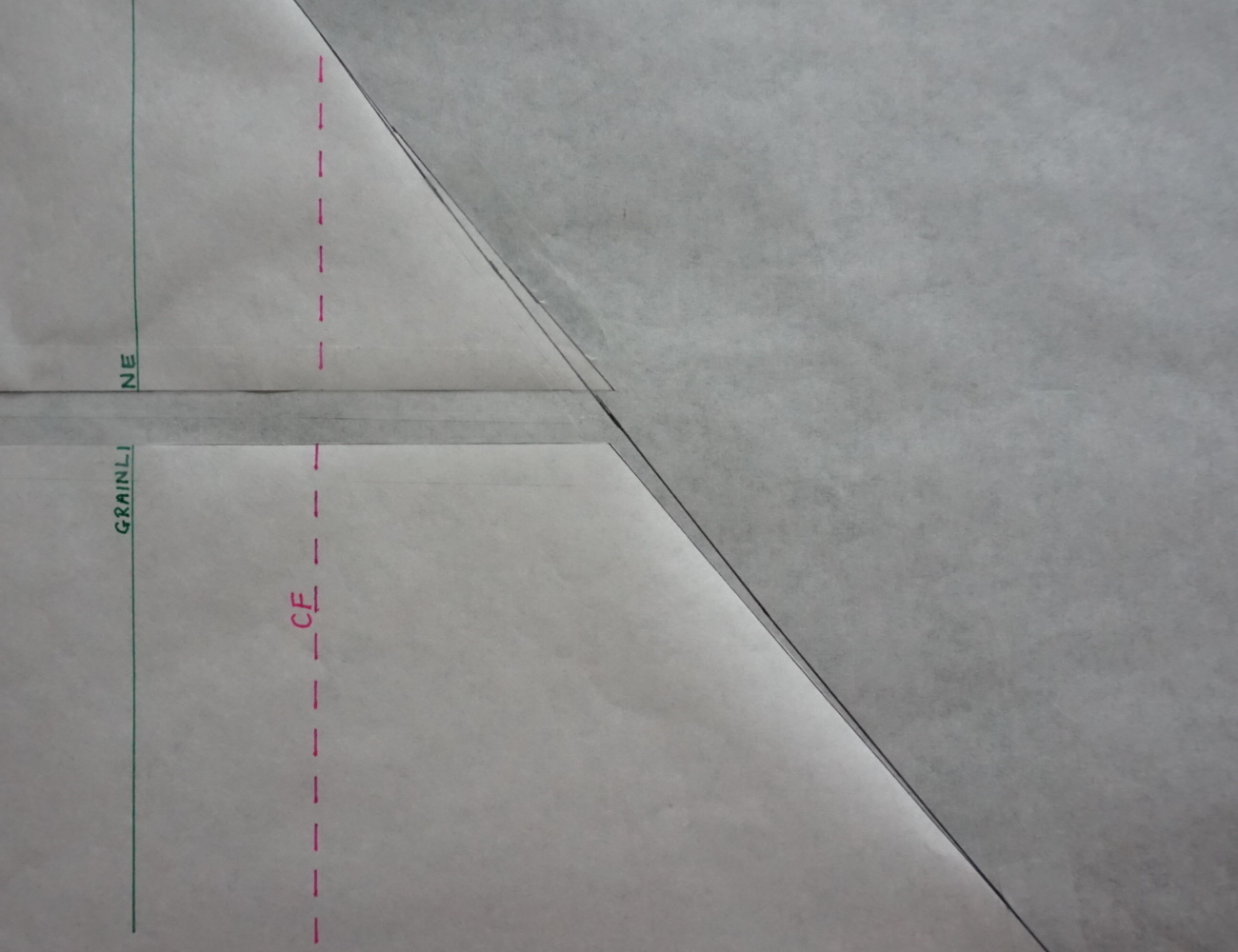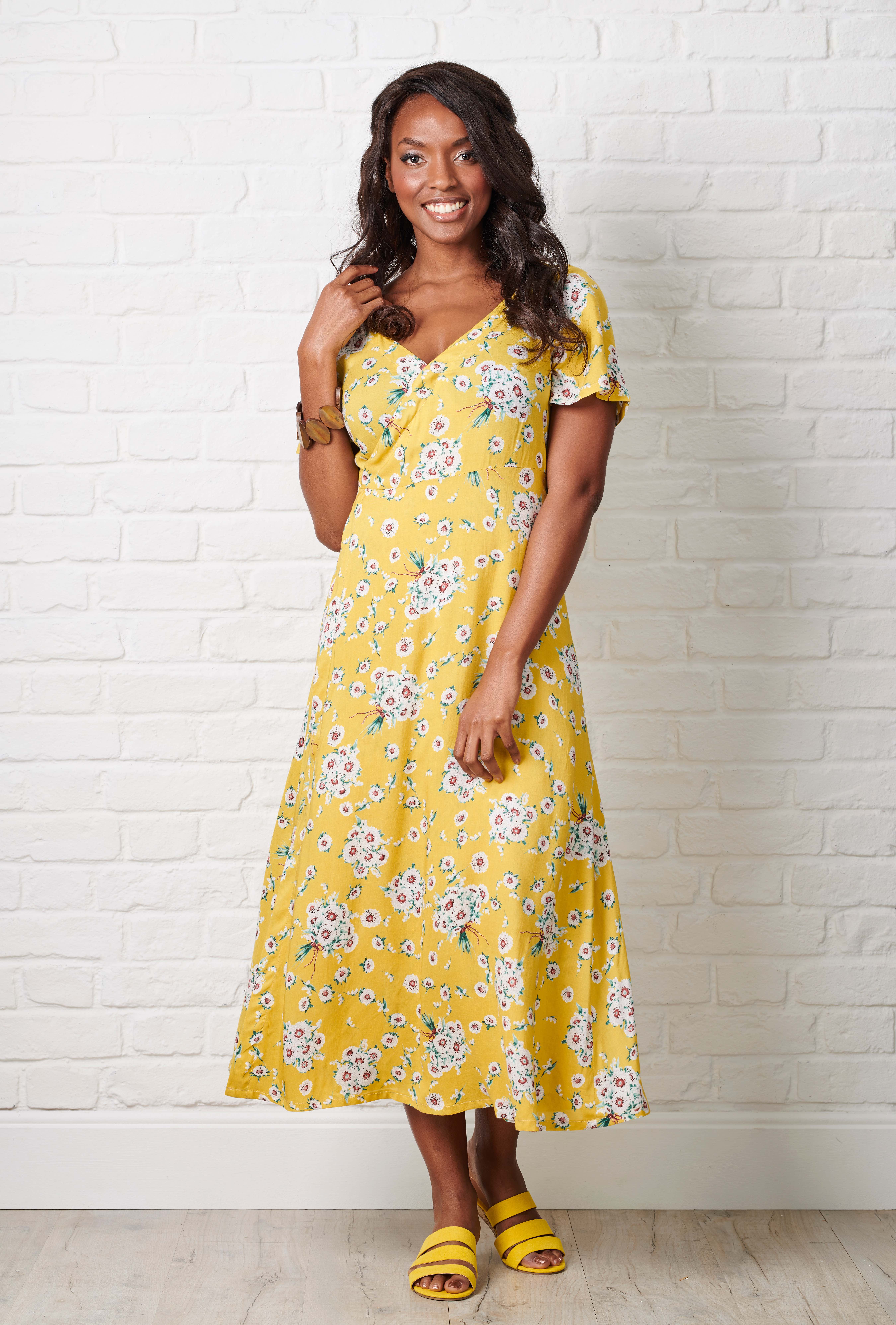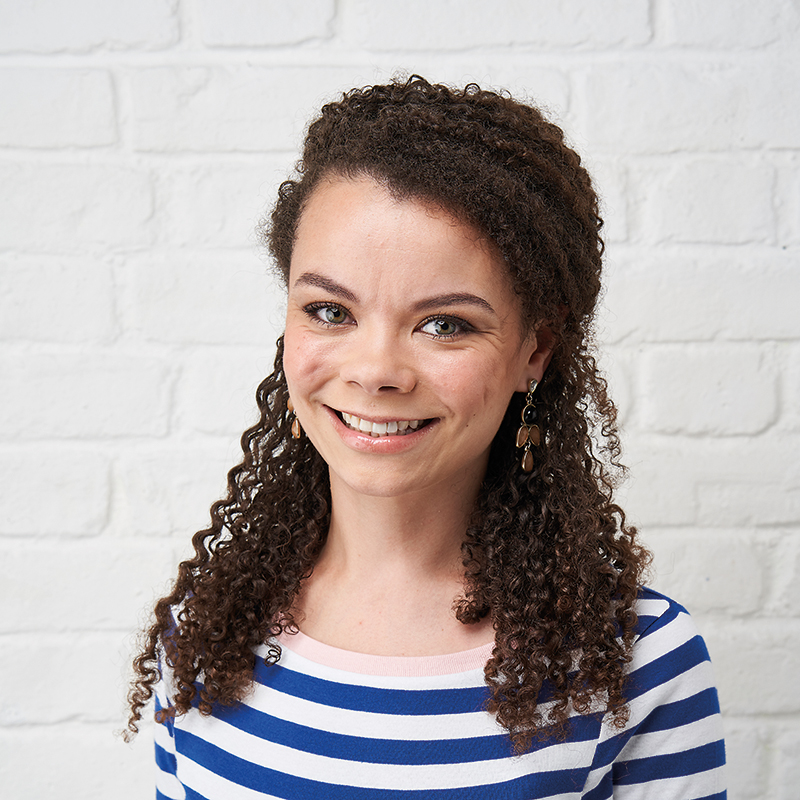You will need
- Calico or other inexpensive fabric 1mx140cm (11⁄8ydx55in), see notes
- Pattern paper
- Pattern master or ruler
- Paper scissors
- Coloured fine liners
- Scotch magic tape
- Mechanical pencil
Get The Maria Wrap Dress sewing pattern
With a tie fastening, elegant flutter sleeves and midi and maxi lengths, The Maria Dress is the ultimate in summery chic. Get making this wrap dress sewing pattern today: it was first published with issue 58 of Simply Sewing magazie & the PDF pattern is available in our Etsy pattern shop.

Notes
- These instructions are for the Maria dress (above) – the basic full bust adjustment principle applies to most bodice pattern pieces, however, due to the combination of an armhole dart and wrap bodice we recommend that these instructions are only applied to the Maria dress.
- 1 meter (11⁄8yd) of fabric will be enough to create two samples of the bodice section. You will need more fabric if you wish to make more samples. Use a fabric that is a similar weight and drape to your fabric for the final garment to get an accurate idea of fit and hang.
- We used coloured fineliners to indicate the various pattern markings and adjustments made. This is for ease of demonstration, but you may find that this helps you to clearly differentiate the lines as pattern alterations can get messy and confusing! If you don’t have fineliners, highlighters or felt tip pens can also be used to mark the pattern.
- Scotch magic tape is a matte tape that you can draw on and can be removed easily without ripping the paper. Any tape will work but use clear tape sparingly so that lines can be marked.
Before you begin
Do I need to do a full bust adjustment?
Most patterns are drafted to a B cup. A full bust adjustment (FBA) will increase the size of the dart and add more room (width and length) into the pattern to accommodate a larger bust. Signs that you need to do an FBA include:
- Your bust measurement is a larger size than the measurement for your waist and hip measurements on the envelope size chart.
- The waist line is pulling so it sits higher on the front than it does on the back. You may need to look in a mirror to gauge this or ask a friend for assistance.
- The wrap front doesn’t fit correctly over your bust, it is too small or too tight. There may also be visible pulling across the bodice when you fasten the ties.
How to calculate your adjustment amount
Wearing your usual bra style, measure your bust at the widest point, ensuring the tape measure is parallel to the floor. Make a note of this measurement. Compare this measurement to the bust measurements on the envelope size chart, if you are 5cm (2in) or more larger than the size that your other measurements fall into then you will need to do an FBA.
The bust measurement on the Maria dress envelope for a size 10 is 86cm (34in). We are going to demonstrate how you would alter the pattern if you fall into the size 10 measurements for your waist and hips but your bust measures 91cm (36in), 5cm (2in) larger than the size 10 bust measurement.
Making a toile
Make a quick sample of the bodice before beginning in the size indicated by your measurements on the envelope back. You will need to stitch the two front and one back bodice pieces together at the side and shoulder seams to get an idea of fit.
It isn't necessary to finish any of the seams or add the facings to your sample and you can use a longer stitch length to speed up the process. Once you have your sample you will see what adjustments need to be made.
Moving the dart
Step 1
Trace off the bodice including the grainline, centre front line, armhole notch and the dart.
Step 2
Measure the width of the dart and mark the centre point at the armhole edge (the widest part of the dart). Draw a line through the centre of the dart, connecting the centre point to the dart tip.
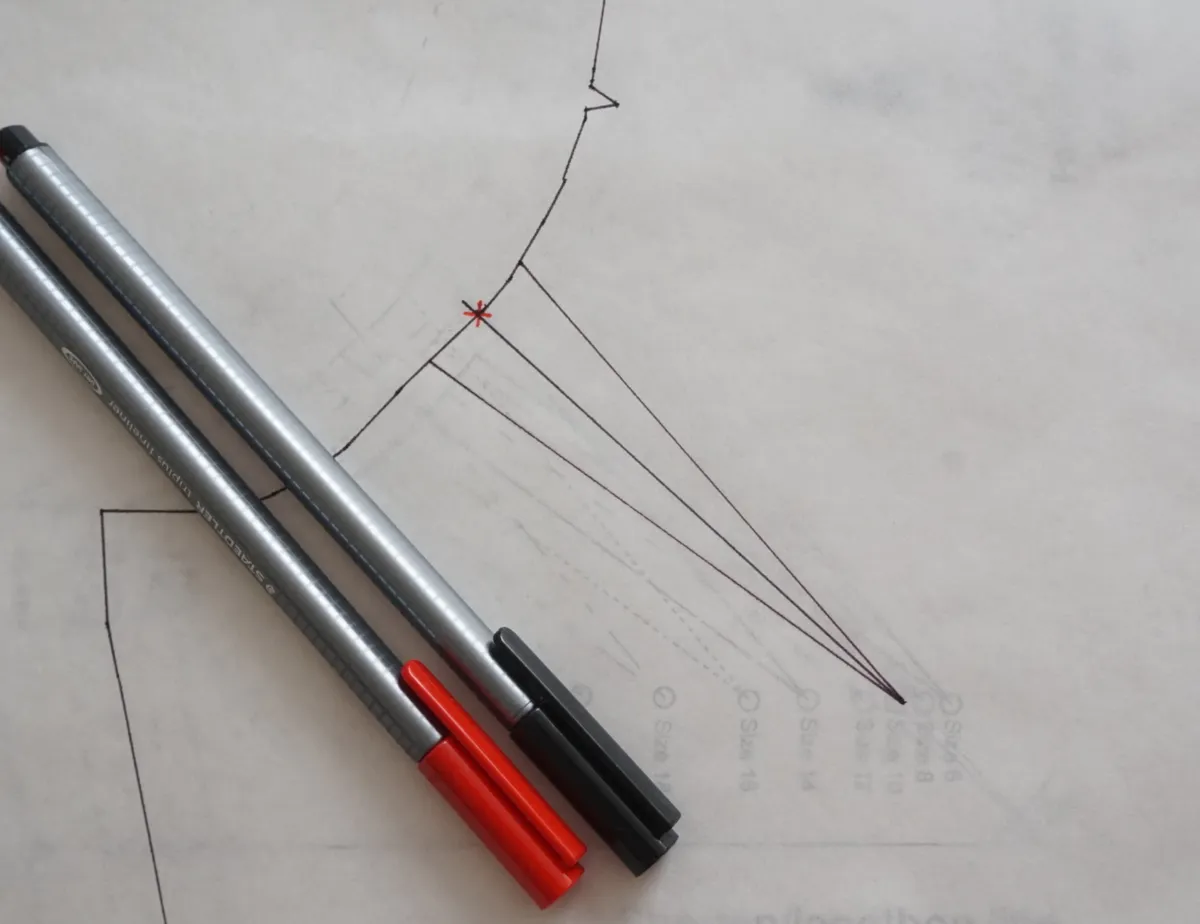
Step 3
Darts are positioned approx. 2.5cm (1in) from the actual bust apex (usually your nipple point) this is so that the bodice doesn’t form a point at the bust. The dart will lay flatter and have a better appearance if it is positioned slightly away from the bust. We are going to find the original bust apex point. Place your ruler along the centre line of the dart and measure 2.5cm (1in) from the tip of the dart in the same direction. Mark this point with a cross and join the cross to the dart tip.
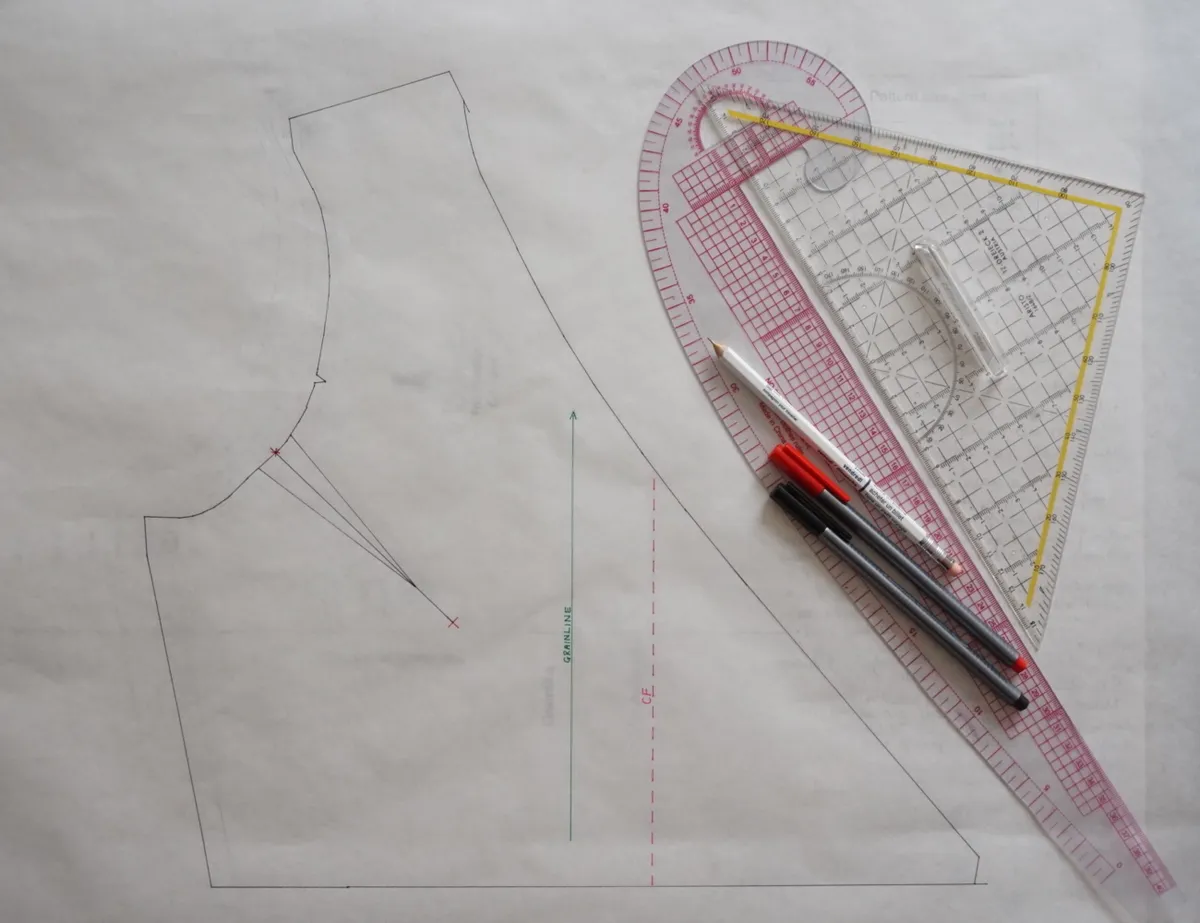
Step 4
Redraw the dart legs so that the tip extends to the marked cross. The widest point of the dart will still be in the same position. We have shown this in red.
Step 5
We will now reposition the dart into the side seam to make the full bust adjustment easier. Measure 8cm (31⁄8in) down from the top of the side seam and draw a line to the bust point cross.
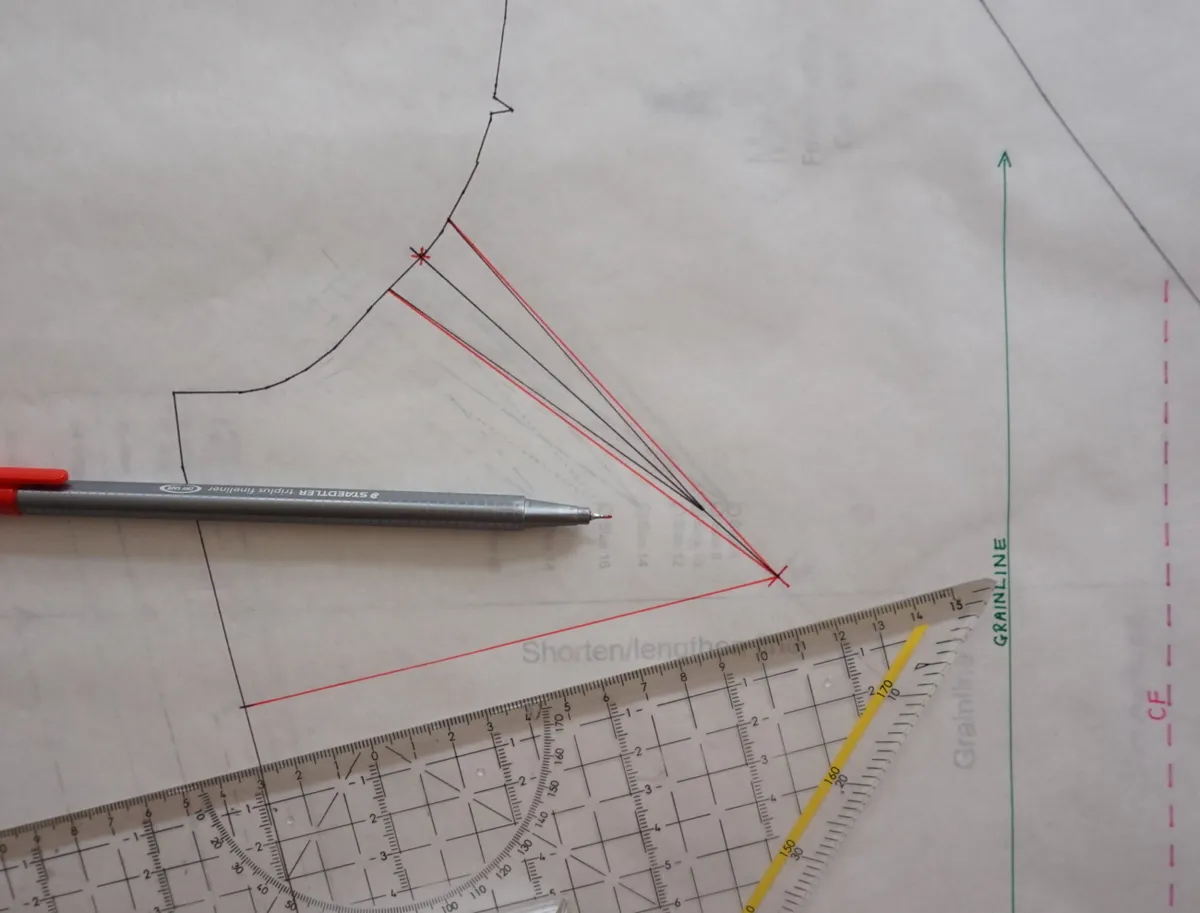
Step 6
Cut out the pattern piece around the outer edge. Fold the dart along the centre line Then fold to bring the dart edges together and tape closed.
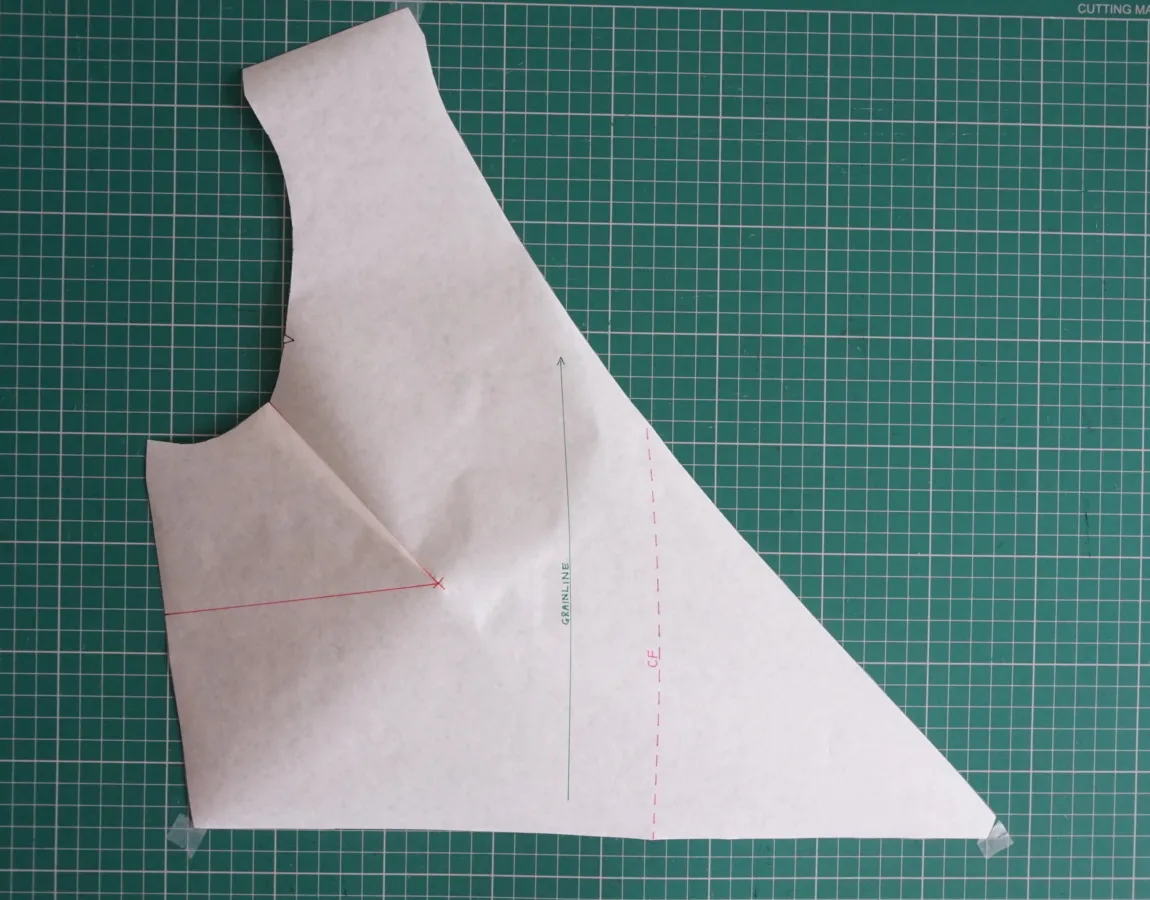
Step 7
Cut along the newly marked side seam line stopping at the bust point cross. This will release the paper and move the dart to the side seam.
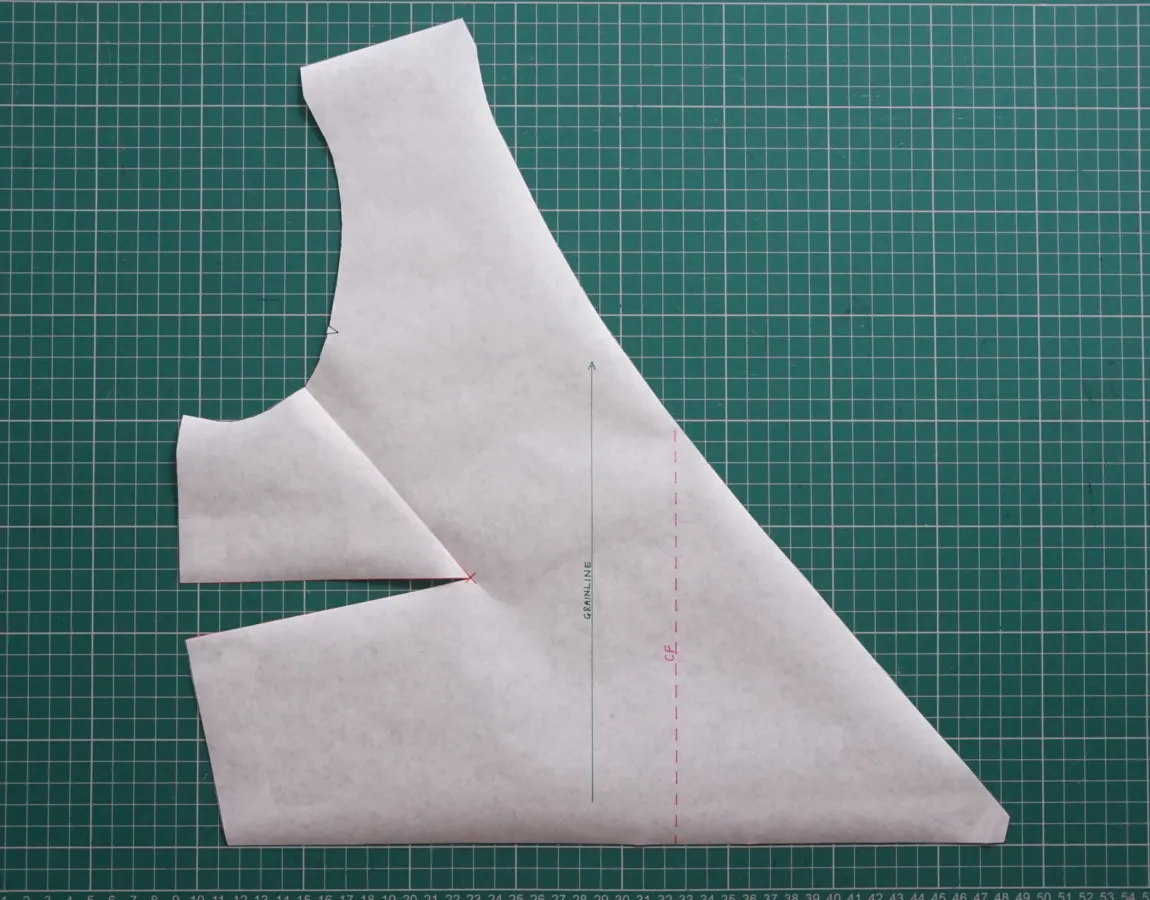
Step 8
Tape paper behind the new dart opening and mark the centre of the dart as before. You may also like to fold along the dart centre line and true the dart edges by cutting through the folded excess paper at the side seam.
